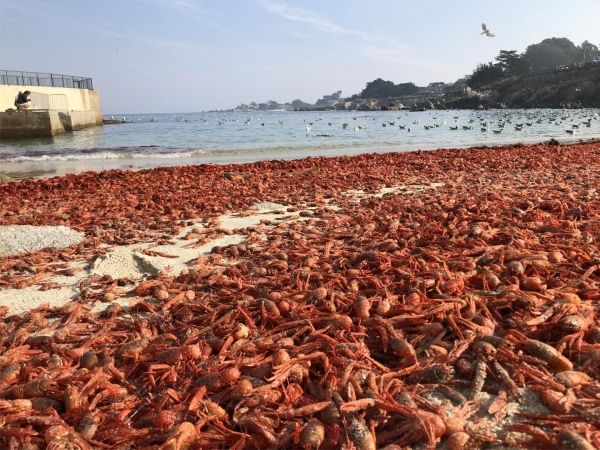New findings suggest that abnormal ocean currents cause the occasional appearance of pelagic red crabs outside their native range.
For decades, people have wondered why pelagic red crabs—also called tuna crabs—sometimes wash ashore in the millions on the West Coast of the United States. New research shows that atypical currents, rather than abnormal temperatures, likely bring them up from their home range off Baja California.
Alongside the discovery, the scientists also created a seawater flow index that could help researchers and managers detect abnormal current years.
The new study, published July 1 in Limnology and Oceanography, began after lead author Megan Cimino biked past a pelagic red crab stranding on her way to her office in Monterey in 2018. Cimino, a biological oceanographer at the National Oceanic and Atmospheric Administration (NOAA) and UC Santa Cruz through the Institute of Marine Sciences Fisheries Collaborative Program, had witnessed a different stranding near where she grew up in Southern California a few years prior.
Read more at University of California - Santa Cruz
Image: During pelagic red crab stranding events--like this one documented at a beach in Pacific Grove, California--the small red crustaceans wash ashore en masse in areas far north of their usual home range in the Mexican state of Baja California. (Credit: Photo by Stephanie Brodie)


